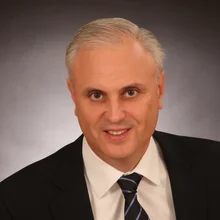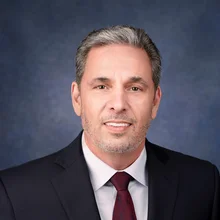
Wells Fargo’s Head of Quant Strategy Explains HPR Deployment
Wells Fargo’s Quantitative Prime Services division has tapped HPR’s Unimus platform, starting with its market access gateway and risk management tool.
John Leone has spent almost 30 years working on the buy side, most recently at Matthew Tewksbury’s Stevens Capital Management (and Tewksbury Capital Management and Trout Trading Capital Management), where he managed market connectivity, direct market access, and prime brokerage and financing relationships. This is all to say that he knows the needs of a quantitative hedge fund.
In the summer of 2019, he decided to cross the street, joining Wells Fargo as the bank’s head of quantitative strategy for its Corporate and Investment Banking unit. When compared with other Wall Street banks, Wells Fargo has not been as aggressive in the quant-tech investment space, but Leone believes that this offers the group a late-mover advantage. And rather than build, Leone’s three decades of experience led him—and thus the bank—to partner with HPR (formerly Hyannis Port Research).
“There’s been a lot of smart discussion about how challenging it can be to compete with Silicon Valley for the best engineering talent. With certain segments of the technology stack, in particular what HPR focuses on, that’s a Herculean task [to build that from scratch] when you look at how the massive tech companies of the world are able to recruit, and how they build engineering teams from very early stages, and have them evolve organically. Our partnership with HPR helps us level the playing field,” Leone tells WatersTechnology.
“HPR, for all intents and purposes, is almost like a Silicon Valley technology firm. They’re able to recruit directly from leading universities, get great engineers, and build direct-to-market systems organically.”

Wells Fargo is now live with eight large hedge funds on the Unimus platform. To start, the bank is incorporating HPR’s market access gateway and its pre-trade risk management tool on its Quantitative Execution desk, though Leone says that the bank will look to migrate other business units onto the platform in the future, as well as add other services, such as HPR’s market data distribution and surveillance offerings.
The key reason for selecting HPR was the flexibility the suite of services provides, Leone says.
“We’re not forced to push some off-the-shelf capability on clients, which is what firms who have legacy, piecemeal solutions often have to do,” he says. “With HPR, we can go to a startup manager that may not have super-advanced order-routing methodologies and things like that, and we can develop a custom solution. We can also go to a very large, established group that has specific ways they do things, and offer them self-directed DMA, [and a] co-located, FPGA gateway.”
Anthony Amicangioli, CEO of HPR, says that of the eight Wells Fargo clients that have been migrated onto the platform, the first two implementations were similar, but the following six needed customization.
“If you’re going to build a platform, it really needs to be able to be morphed and flexible based on those [individual client] needs,” he says. “So, for example, if you take something as simple as FIX connectivity, a lot of people think of that as being like a USB plug-in, and you just plug that into your computer [and it runs]. Unfortunately, the reality is, I don’t think any two FIX connections, as a simple example, are alike; you always have to be able to [customize that connection]. If you can’t do that in an agile, predictable, and high-performance way, you’re in trouble.”
While Wells Fargo has an existing DMA platform, Leone says it was not built with an eye toward connectivity for low-latency, quantitative hedge funds that require the cleanest engineering and fastest, most-stable pipes; HPR has made its name by developing high-performance FPGAs, thus allowing the bank to focus on high-touch services.
“Between the HPR product line and Wells Fargo’s resources, we can now go into virtually any quantitative manager and offer a comprehensive, highly tailored prime brokerage solution,” he says. “There’s an old joke in this space about how there are two types of quantitative hedge fund managers: the paranoid and the really paranoid. Obviously, that’s a bit tongue-in-cheek, but it’s our job to recognize that anonymity is very important to this community. So our quantitative execution desk has just five people—no one else touches or sees that order flow, and it’s exclusively through HPR software and equipment.”
As WatersTechnology has noted previously, HPR made its name as a hardware provider, but the company has spent the past several years expanding into the software space. With its 2018 launch of Omnibot, which serves as a low-latency switch, router, and pre-trade risk gateway, HPR began to move in a new direction. Omnibot leverages HPR’s Unimus management and control framework, which underpins the vendor’s entire solution set, including Riskbot, Softbot, and Databot.
While Unimus has been around for many years, HPR is now leveraging it to really grow its software presence. The goal being that it wants to be a one-stop-shop for firms of all stripes and sizes, thus making it a more enticing platform for banks like Wells Fargo to incorporate on the quant side, “soup-to-nuts,” as Leone puts it.

Amicangioli says those efforts to expand beyond the world of FPGA hardware—which is still vitally important for the company—have allowed HPR to evolve alongside what the industry as a whole is now looking for out of a platform provider.
“While [we offer] market access, risk gateways, pre-trade risk, etcetera, the reality is that the big game in this platform business is the ability to begin to fold all of the products onto a very singular platform or framework so that when all is said and done—whether it’s a smart-order router, or a data-delivery package, or a market access gateway, or pre-trade risk—it’s all one platform. When you look at what Google and Amazon are doing, it’s very similar—they are shepherding users into a more singular way of doing things. So the trend is very clear.”
Further reading
Only users who have a paid subscription or are part of a corporate subscription are able to print or copy content.
To access these options, along with all other subscription benefits, please contact info@waterstechnology.com or view our subscription options here: http://subscriptions.waterstechnology.com/subscribe
You are currently unable to print this content. Please contact info@waterstechnology.com to find out more.
You are currently unable to copy this content. Please contact info@waterstechnology.com to find out more.
Copyright Infopro Digital Limited. All rights reserved.
As outlined in our terms and conditions, https://www.infopro-digital.com/terms-and-conditions/subscriptions/ (point 2.4), printing is limited to a single copy.
If you would like to purchase additional rights please email info@waterstechnology.com
Copyright Infopro Digital Limited. All rights reserved.
You may share this content using our article tools. As outlined in our terms and conditions, https://www.infopro-digital.com/terms-and-conditions/subscriptions/ (clause 2.4), an Authorised User may only make one copy of the materials for their own personal use. You must also comply with the restrictions in clause 2.5.
If you would like to purchase additional rights please email info@waterstechnology.com
More on Data Management
New working group to create open framework for managing rising market data costs
Substantive Research is putting together a working group of market data-consuming firms with the aim of crafting quantitative metrics for market data cost avoidance.
Off-channel messaging (and regulators) still a massive headache for banks
Waters Wrap: Anthony wonders why US regulators are waging a war using fines, while European regulators have chosen a less draconian path.
Back to basics: Data management woes continue for the buy side
Data management platform Fencore helps investment managers resolve symptoms of not having a central data layer.
‘Feature, not a bug’: Bloomberg makes the case for Figi
Bloomberg created the Figi identifier, but ceded all its rights to the Object Management Group 10 years ago. Here, Bloomberg’s Richard Robinson and Steve Meizanis write to dispel what they believe to be misconceptions about Figi and the FDTA.
SS&C builds data mesh to unite acquired platforms
The vendor is using GenAI and APIs as part of the ongoing project.
Aussie asset managers struggle to meet ‘bank-like’ collateral, margin obligations
New margin and collateral requirements imposed by UMR and its regulator, Apra, are forcing buy-side firms to find tools to help.
Where have all the exchange platform providers gone?
The IMD Wrap: Running an exchange is a profitable business. The margins on market data sales alone can be staggering. And since every exchange needs a reliable and efficient exchange technology stack, Max asks why more vendors aren’t diving into this space.
Reading the bones: Citi, BNY, Morgan Stanley invest in AI, alt data, & private markets
Investment arms at large US banks are taken with emerging technologies such as generative AI, alternative and unstructured data, and private markets as they look to partner with, acquire, and invest in leading startups.








